Just a quick update, The windlass is back on the bowsprit, working fine, I can lower the anchor with the motor now as well as by hand, also I wired in a cheap wireless remote which works well. I ended up moving the windlass Solenoid into the chain locker.
Kathy has taken over the watermaker maintenance, and is keeping records of the state of affairs, we were able to run it up here in the marina as the water is so clear here. We are getting about 300 ppm (Parts per million) pure water, which is quite acceptable I’m told. We can also make about 10 litres per hour, which isn’t too bad.
Finally I’m working on our passage north, on the map below you can see our route north from Borneo up past the western side of the Philippines.
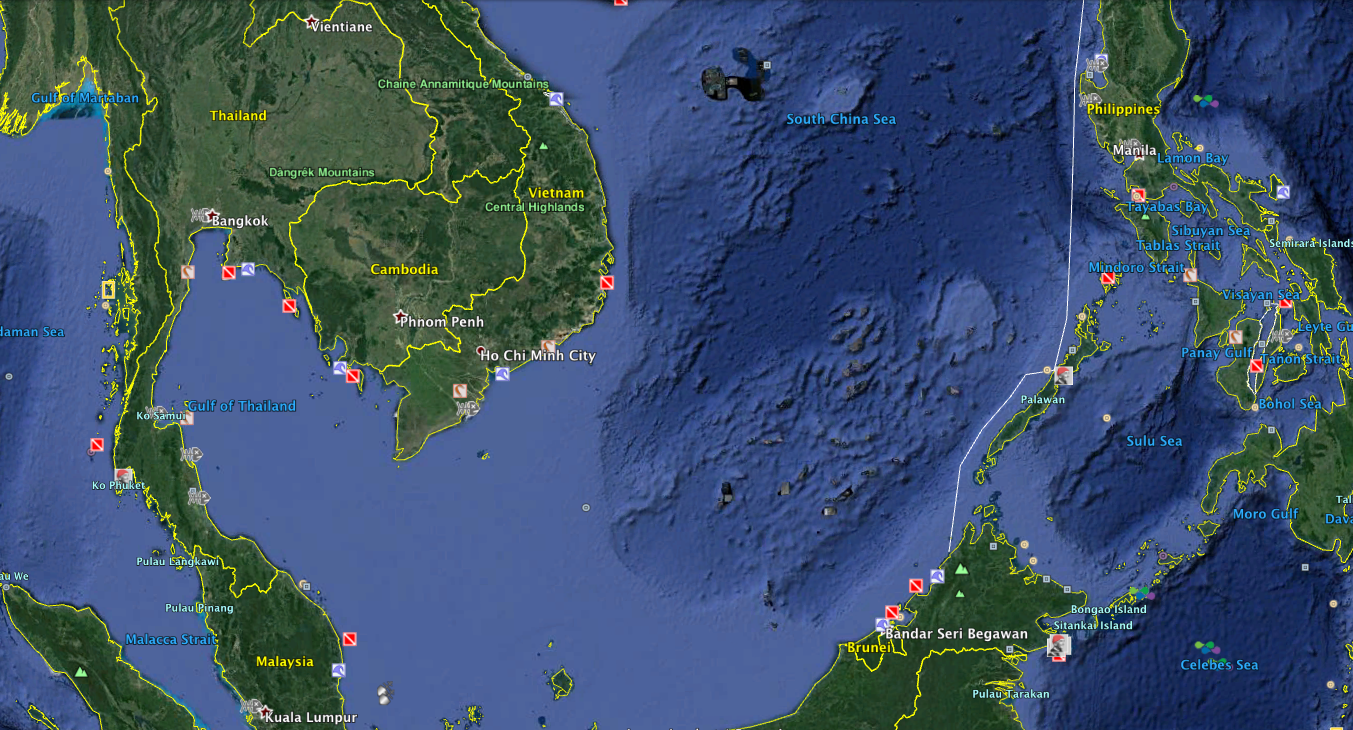 Zooming in, you can see our route passes up past the Palawan Islands, we will be checking into the Philippines, possibly at Puerto Princesa.
Zooming in, you can see our route passes up past the Palawan Islands, we will be checking into the Philippines, possibly at Puerto Princesa.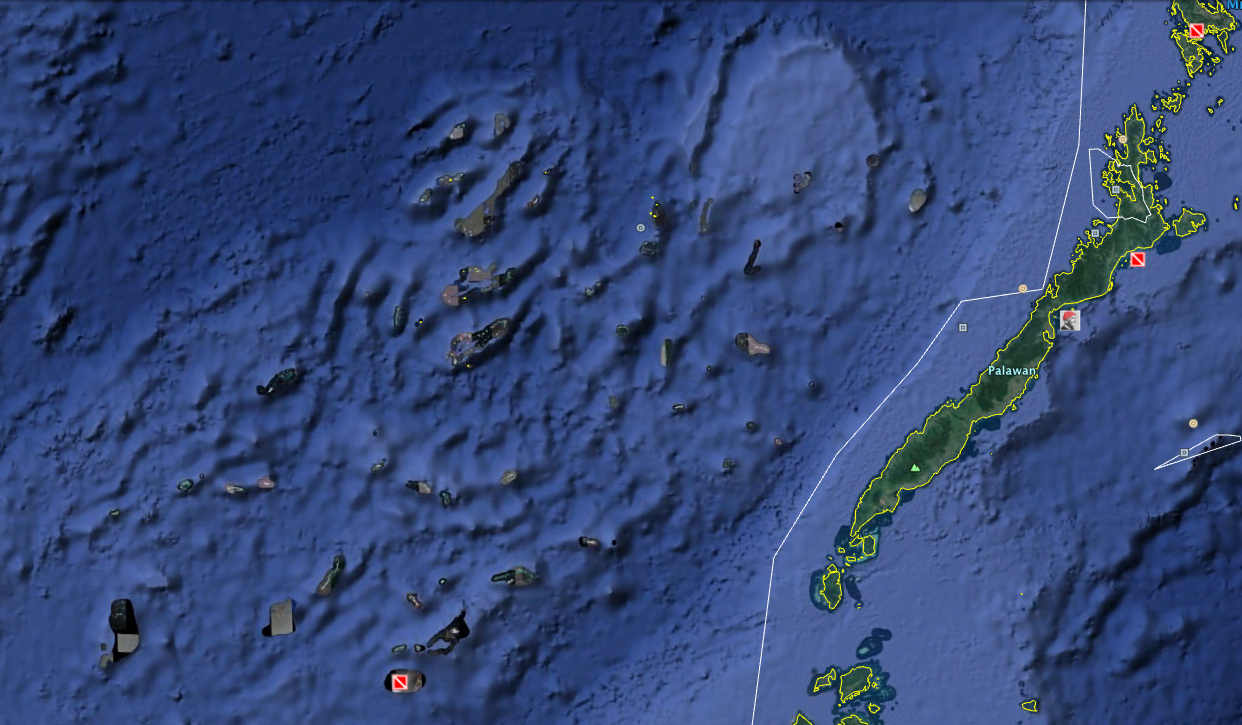 To the west of the islands you can see lots of lumps in the sea, these are thousands of islands and reefs, many of them, like the Spratly islands have disputed owners, with China, Indonesia, Malaysia, Vietnam and the Philippines all laying claim. Early on I thought I could sail across this area as it’s the most direct route to Hong Kong, but I soon realised you would have to be mad to go that way, the charts, where they exist, are often very inaccurate. Also there’s lots of military activity around the place. Also there’s a load of uncharted reefs and rocks, for hundreds of miles the depth is only a few metres.
To the west of the islands you can see lots of lumps in the sea, these are thousands of islands and reefs, many of them, like the Spratly islands have disputed owners, with China, Indonesia, Malaysia, Vietnam and the Philippines all laying claim. Early on I thought I could sail across this area as it’s the most direct route to Hong Kong, but I soon realised you would have to be mad to go that way, the charts, where they exist, are often very inaccurate. Also there’s lots of military activity around the place. Also there’s a load of uncharted reefs and rocks, for hundreds of miles the depth is only a few metres.
However, I was amazed to see a very large yacht had hit a reef known as ‘Mischief Reef’ a few days ago; as Kathy said, “surely the clues in the name”.
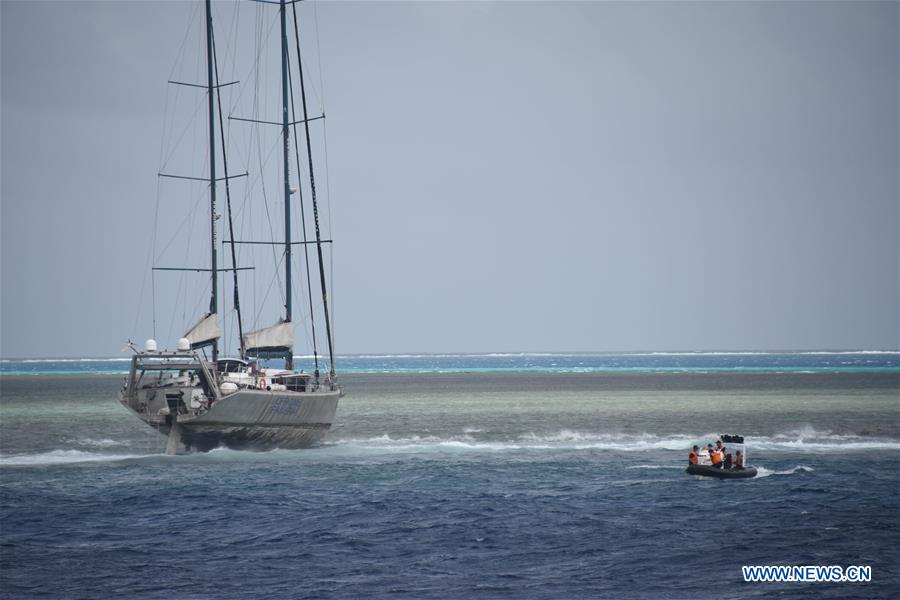 More details here
More details here
The area to the east of Palawan is where the pirates hang out, and although it’s supposed to be a fantastic place to cruise, we won’t be going there. We got friendly with a cruising couple in Miri who had been sailing the area where the pirates operate, for a few years, and on more than one occasion, they had missed the terrorists by a day or two. Sadly some of their friends they made there didn’t fare too well.
Once we get midway up Palawan, we have left the terrorists homeland and we will be well on our way to Japan.
I have been putting the next big job off for too long now, the heating system. The boat has plumbed in heating, but it probably hasn’t been used for twenty years, so who knows what state it will be in. I have started investigating the system and found out it’s an Eberspacher water heater system, so basically it burns diesel to heat water which it pumps around radiators. I have two radiators, or heat exchanges as they are known, these are small units fitted under the seating, which have fans to blow the hot air out. Much like the fan heaters you get on the local trains (I’m thinking Merseyrail). Fortunately the heater and the heat exchangers aren’t expensive, so if they are faulty, it’s probably easiest to replace them, rather than to think of a new system for the boat. My only worry is what happens when the unit decides not to start, mid ocean, when it’s freezing. I hate being cold. It has a computer inside (ECU), and I expect if it fails to start, there’s sod all I can do about it. On the last boat we had a diesel stove heater, diesel dripped onto a hot metal plate and burnt. It had a chimney, and that was about as complicated as it got, if the diesel dripped, and the chimney wasn’t blocked, it had to work. However, you had to keep everything clean of soot, and that proved to be a major pain, soot and boats don’t mix, especially if your as clumsy as me.
I mentioned I have ordered the solar panels from Panasonic, at a higher price than I can buy them in the UK, which is mad as they are made here in Malaysia, and are being shipped from the factory in Penang. Well just now I got the bill for shipping, £300 !!!!! I have never paid £300 for shipping anything in my life, I’m still in shock. £300 buys me another fortnight lazing in this resort.
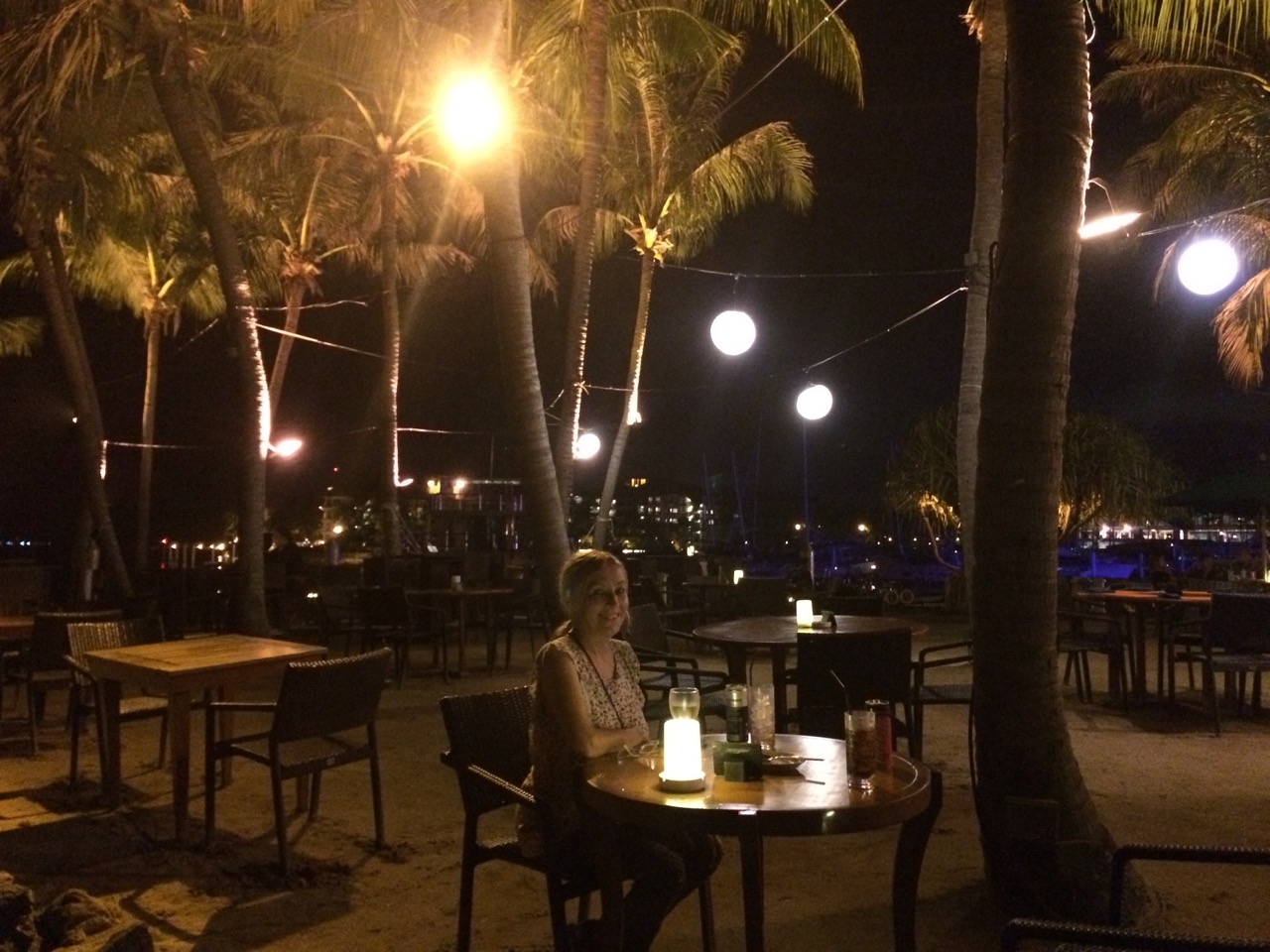

I bought a water filter today to put in line with the hose pipe, so that we are filtering the water before it goes into the tanks. I now feel like I have moved closer to being a real hardened cruiser as we are drinking the local tap water on the boat. We take the tap water through a 100 Micron course filter on its way to the tanks, then a 20 Micron filter in the galley. While looking around the hardware store I bought the filter in, I wondered why they had so many kettles.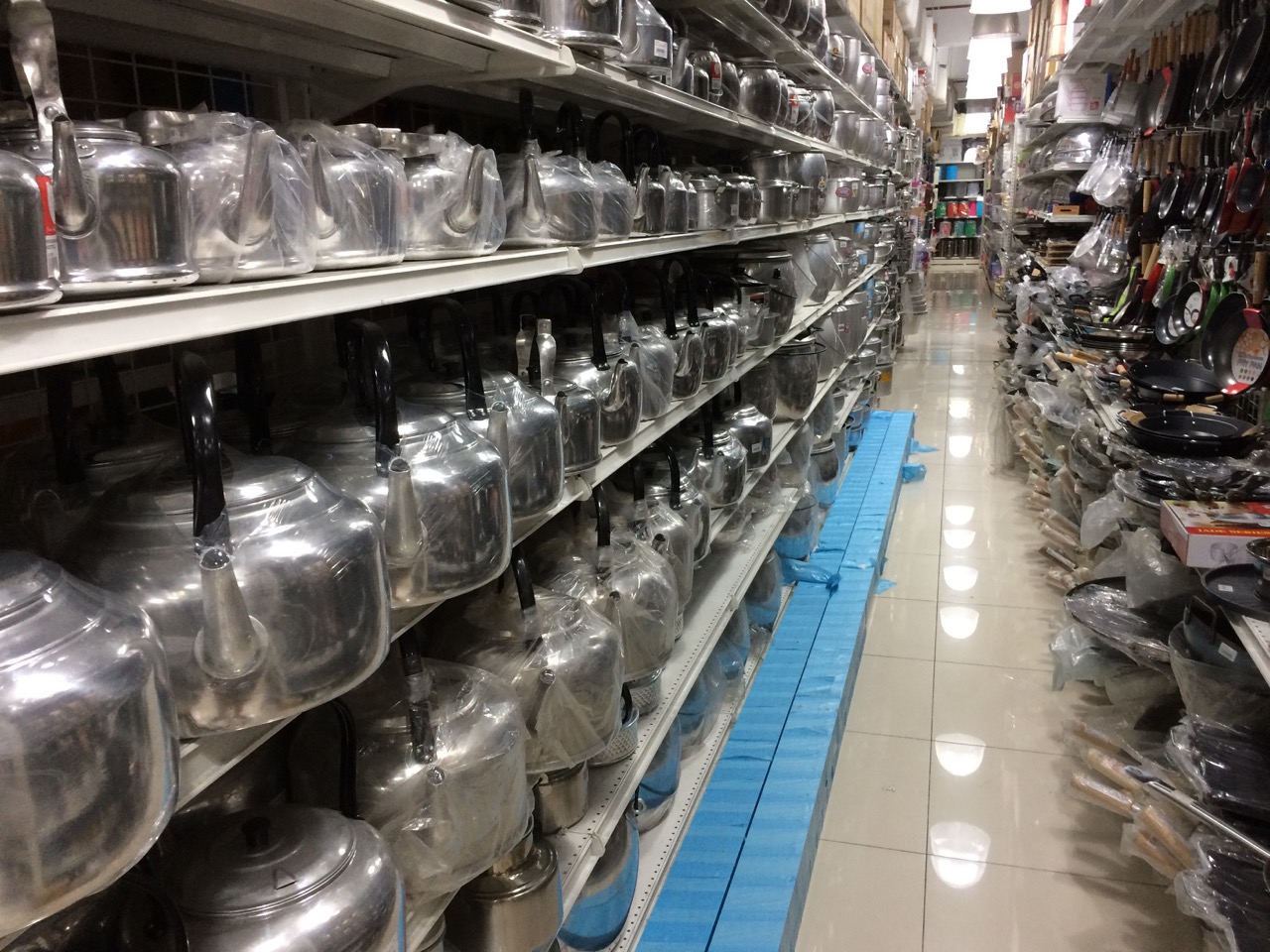
Paul Collister
